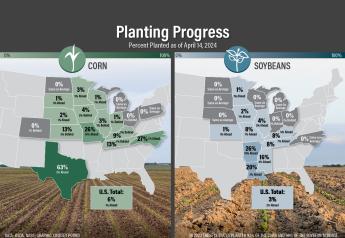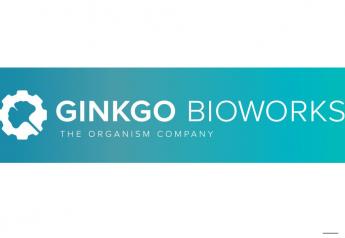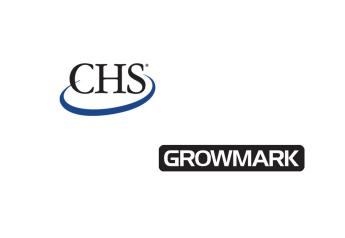Koch Announces New Patented Ingredients for Nitrogen Inhibitors

Centuro nitrification inhibitor and Anvol urease inhibitor from Koch Agronomic Services are both expected to be commercially available in the U.S. in 2018. The FIFRA registration for Centuro is pending, and the EPA TSCA registration application in progress with submission in 2018 for Anvol, which is expected to be commercially available by fall of 2018.
Both products have been part of University testing during the development phase, and they showed performance in their role in nitrogen use efficiency as well as yields.
“U.S. farmers and ranchers apply roughly 13 million tons of nitrogen fertilizer to their fields each year, yet due to many conditions, often outside their control, as much as half of it is lost through ammonia volatilization, leaching and denitrification,” says Justin Hoppas, executive vice president of Koch Agronomic Services. “By listening to our customers and driving innovation through R&D, we are discovering new solutions that increase agricultural efficiency. Our goal is to deliver proven technologies that can make every ton of fertilizer more efficient and optimize our customers’ crop nutrition investments.”
Centuro is designed to work with anhydrous ammonia and provides a new nitrification inhibitor technology for both increased nitrogen protection and flexibility in handling.
Greg Schwab, KAS director of agronomy, notes that despite its popularity, anhydrous applications require careful planning to guard against leaching and denitrification during the winter; even spring applications can be subject to loss. However, for a variety of reasons, some growers do not protect their anhydrous with a nitrification inhibitor.
“Research has shown that up to three times more nitrogen is available to the plant when a nitrification inhibitor is included with anhydrous ammonia applications. Yet KAS estimates 70 percent of anhydrous applications are made without a stabilizer,” Schwab says. “We expect Centuro to change the way the industry uses this technology because of the product’s strong efficacy and its noncorrosive formulation, which research has shown will provide significant handling and equipment benefits.”
The product underwent a seven-year development phase, which included university trials. One example of university performance trial results with Centuro in Nebraska, Illinois and Missouri demonstrated a 35 percent improvement in nitrogen use efficiency in fall-applied anhydrous ammonia and increased corn yield by an average of 10 bushels per acre, when compared to untreated anhydrous ammonia. Additionally, studies conducted at Iowa State University showed that Centuro reduced nitrate leaching by 65 percent in fall-applied anhydrous ammonia and 30 percent in spring-applied anhydrous ammonia compared to untreated anhydrous ammonia.
Research has also shown the patented formulation of Centuro makes it noncorrosive to equipment and does not require stainless steel tanks.
For above-ground nitrogen protection, Koch Agronomic Services plans to introduce Anvol stabilizer. In Louisiana State University volatilization trials, Anvol reduced ammonia loss by 65 percent compared to untreated urea and was 26 percent more effective at reducing losses than Agrotain nitrogen stabilizer, which has been a leading product on the market for more than 25 years.
“ANVOL will represent a new age of urease inhibitor technology,” Schwab says. “In addition to a higher return on investment, the formulation provides improved coating efficiencies, allowing for reduced labor demands and other benefits that will deliver increased operational efficiencies and flexibility.”







